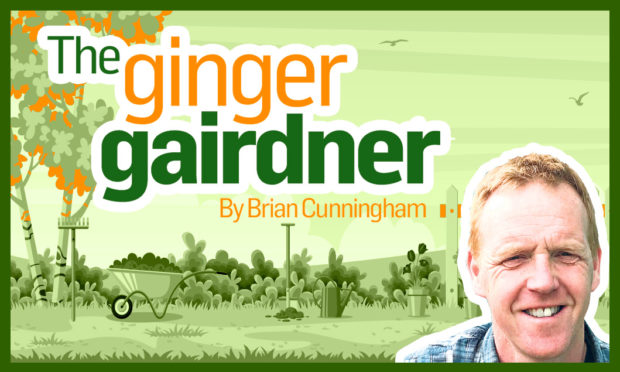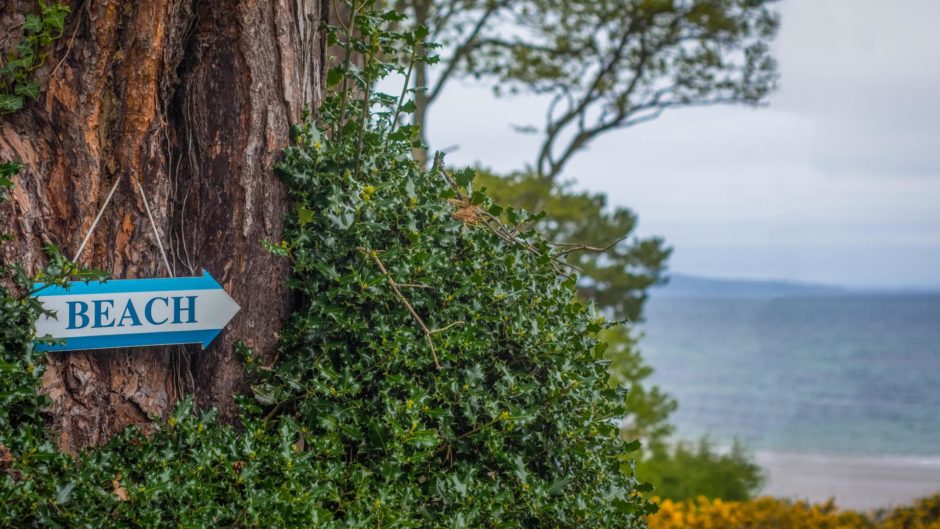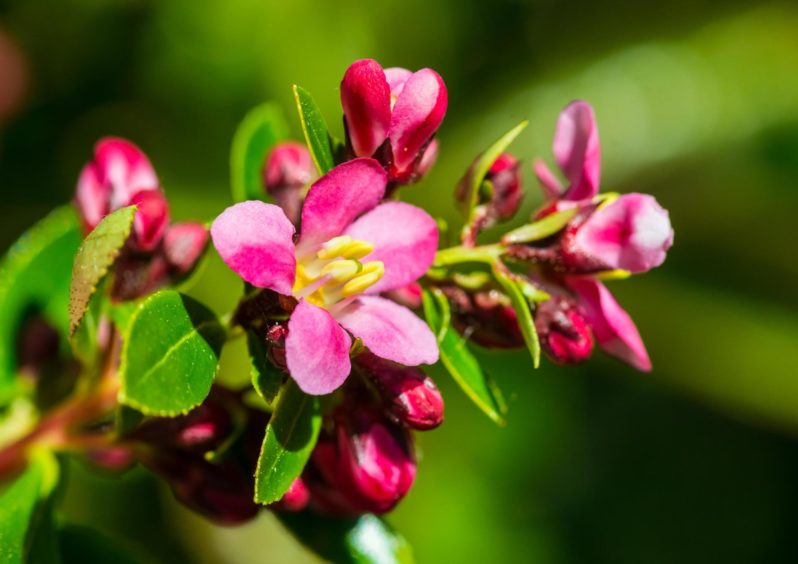This week Brian Cunningham, our very own Ginger Gairdner, takes a look at the challenges of coastal gardening and dealing with the fearsome east wind.
Coming from St Andrews I’ve naturally made a connection with the coast which I’ve missed seeing this year as my return visits have been limited due to the travel restrictions. We did manage a short break in October up to the Moray Coast which is absolutely beautiful. The location very much reminding me of home with the jets from RAF Lossiemouth flying over head taking me back to the noise we used to hear from the airbase at Leuchars.
I was spoilt by my family that holiday as I was allowed to visit three gardens in as many days, normally I am only permitted two garden visits per week and even then they have to include a play park of some sort, which is fair enough. Throughout my career I have always gardened on the east side of the country but those few days around Forres and Nairn brought back to me the subtle climatic differences and challenges faced by those gardening right on the coast.
The sea takes longer to heat up and cool down than the rock and soil of the land so it’s generally that little bit warmer on the coast than that of inland which results in these areas receiving just under 10 days of snow over the course of a Scottish winter.
As any coastal gardener will tell you that doesn’t mean they have the freedom then to create a tropical plant oasis, having a set of different challenges to face. On the coast there is nothing to stop the full force of the wind which when blows off the North Sea is just blooming freezing threatening the health of plants in different ways, constantly rocking taller trees and shrubs putting strain on their roots whilst the salt laden winds can burn tender foliage.
Sheltering from the wind
It won’t surprise you when I now say not to worry if this is you, us gardeners are a resilient bunch and over the years our fore-gardeners have come up with little tricks to help us grow plants today in these challenging situations.
We cant physically stop the wind but what we can do is create enough of a barrier to take the sting out of it’s strength which we do by making a wind-break. A wall or a fence seem an obvious answer but these solid obstructions really only divert the wind potentially causing damage elsewhere in the garden as the air flows over or around. The best option is to filter the wind, taking the strength out of it, which in this case can be achieved by a stylish slatted fence that has gaps between the rails also making an attractive backdrop for the plants. Wherever possible I like to use plants as solutions to garden problems and so would opt for either a hedge or a few strategically placed shrubs.
Exposed gardens
This problem isn’t exclusive to coastal gardens, if you have an exposed or large garden you may need to go all out planting up a shelter belt of trees best planted to provide protection to your garden from the prevailing westerly or cold east winds.
Wind can also dry out the leaves of a plant causing it to lose water through its foliage faster than it can take up from its roots. With this in mind, it is important to be sure we are choosing the right plant for the right place but also considering what size is it.
I’m really happy that people are planting up rather than paving over their garden space but at the same time garden makeover programmes on TV can give the impression that gardens can be made instantly especially as these 3m/ 10ft tall trees are added to give the mature effect. Not only do you need a healthy budget for these but you will also need to be on top of the aftercare making sure the tree does not dry out over the next couple of years as a root system is established.
I’m always happy to choose a smaller plant as it will be less vulnerable to drought and wind, staked if required for a couple of years to hold it in place while roots are made to support itself. There will only be a small surface area of foliage to dry out compared to that of large plant so although I will still need make sure I am watering during dry spells, I wont need to be out there daily with the fireman’s hose.
Once watered, providing a good mulch around the base of a plant will help the ground conserve moisture. For a seaside garden I like it when gravels are used dotted with larger round stones to mimic that of the beach. Even nicer is when a piece of driftwood, old fishing creel or even an anchor are added to give this kind of garden some special character.
Seaside successes
Dwarf pines and Eucalyptus make wonderful specimen trees in a seaside garden or choose from deciduous Azaleas, Escallonia, Hebe, Lavender or Rosa rugosa shrubs if your space is limited. Under plant with Agapanthus, Dianthus, Euphorbia, Sedum perennials and Nerine bulbs. A full list of plants suitable for exposed coastal gardens can be found in Cox & Curtis-Machin’s excellent Garden Plants for Scotland book.














